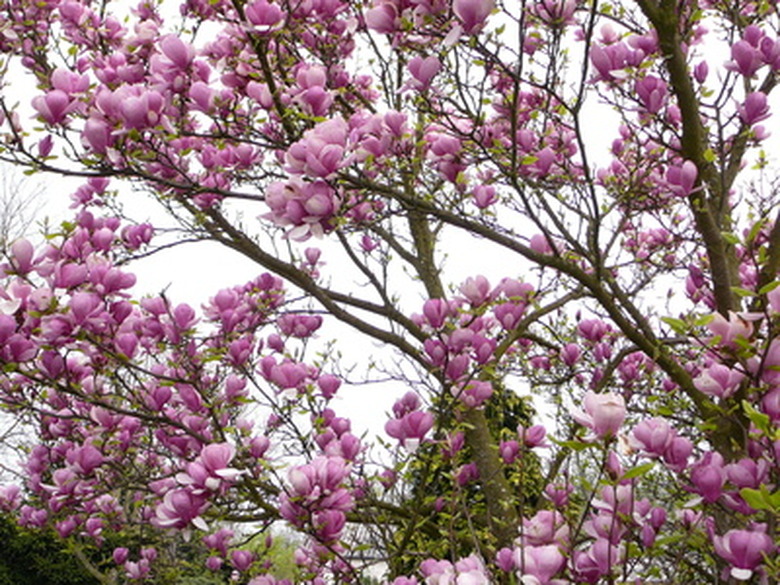Magnolia Tree Varieties Recommended For Western Washington
Magnolias are an ancient group of trees that evolved before bees appeared, so the flowers are pollinated by beetles and have a thick, solid texture to protect them from damage by their pollinators. Usually white, pink or purple, the flowers are large and showy, making these trees some of the best for creating focal points in the garden. Many species of Magnolia are well adapted to Western Washington, but not the evergreen Magnolia grandiflora of Southern states.
Saucer Magnolia
One of the most popular small trees for gardens in Western Washington is the saucer magnolia, M. soulangeana. It is actually a hybrid of two Chinese species, M. liliflora and M. denudata. The seedlings' flowers may look quite different from the parent plant.
There are many named varieties from which to choose with upward-facing cup-like flowers of white, pale to dark-pink or purple, about 8 inches wide, appearing before the foliage in early spring. The leaves are light green, oval, 6 inches or more in length. It will eventually reach 25 feet in height but may be pruned lower.
- Magnolias are an ancient group of trees that evolved before bees appeared, so the flowers are pollinated by beetles and have a thick, solid texture to protect them from damage by their pollinators.
The saucer magnolia prefers rich soil with regular watering but will not tolerate constantly wet ground. It is somewhat shade tolerant and is strikingly beautiful when seen against dark evergreens.
Star Magnolia
The star magnolia, M. stellata, is a shrubby plant, about 10 feet high and twice as wide, with medium-sized leaves and 3 to 5 inch wide flowers. These have narrow, white-to-pink, strap-shaped petals. The flowers appear in late winter, before the leaves, and are particularly effective at the entry to a home where they can be admired during gray days. Some varieties are fragrant.
This shrub prefers rich, moist soil and grows well in partial shade. It adds a nice texture to the garden even when out of bloom. Its fall color is yellow.
- The saucer magnolia prefers rich soil with regular watering but will not tolerate constantly wet ground.
Magnolia campbellii
This is a large tree, growing up to 80 feet in height. It is stunning when covered with the 10 inch wide rose-colored blossoms. It is native to sheltered valleys of the Himalayas and southwestern China. Though not as hardy as the magnolias listed above, it does well in Western Washington.
M. campbellii flowers very early and is best planted among firs or other evergreens to protect it from strong winds and heavy frosts. It needs a deep, rich, evenly moist soil.
To see it in bloom, drive through the Washington Park Arboretum in Seattle in March and look for the huge blossoms among the firs.
- This is a large tree, growing up to 80 feet in height.
- It is stunning when covered with the 10 inch wide rose-colored blossoms.
References
- What Tree Is It?: Saucer Magnolia
- Kemper Center For Home Gardening: Magnolia stellata
- "The Sunset National Garden Book"; by the editors of Sunset Books and Sunset Magazine; 1997
